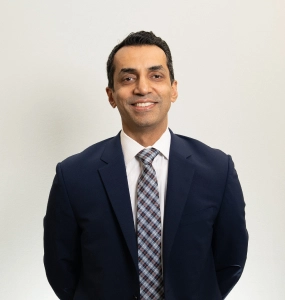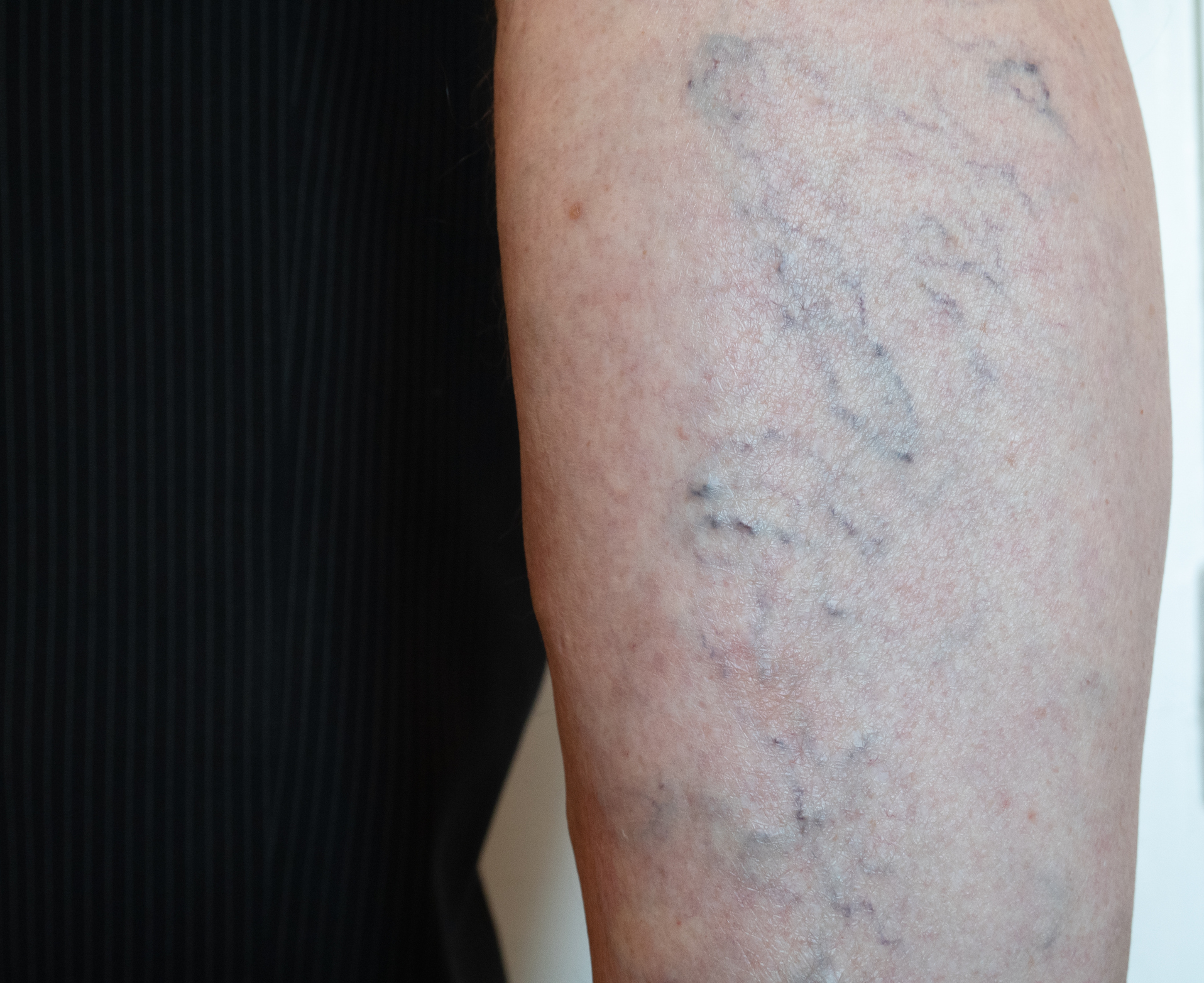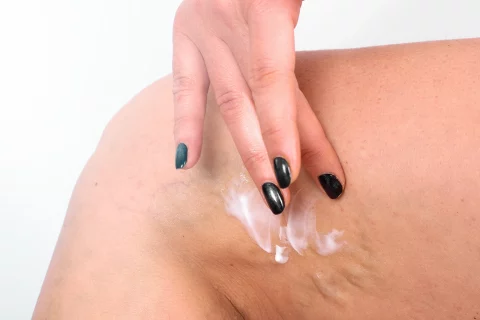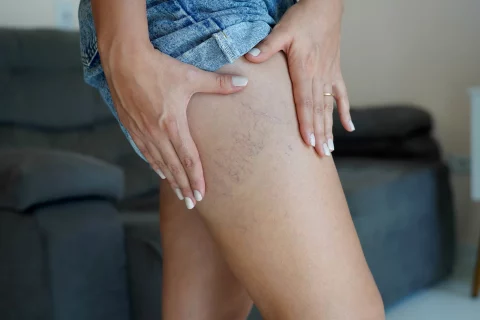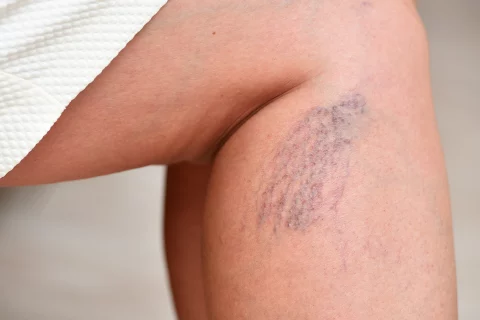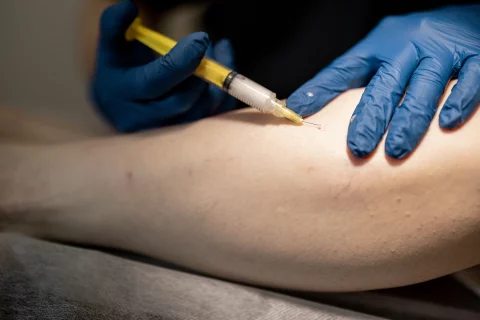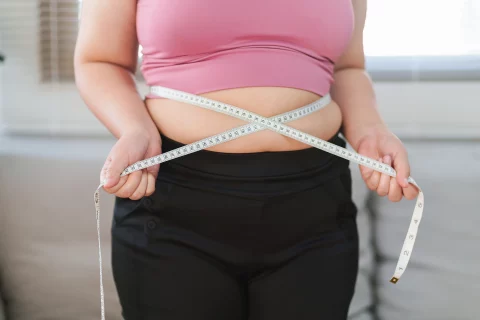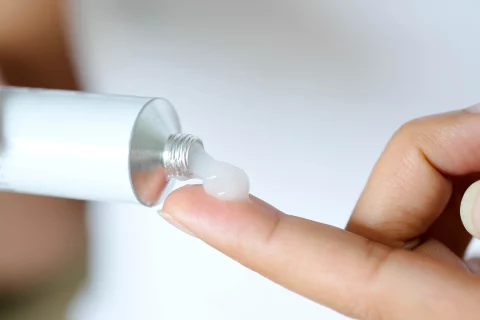Spider veins are often considered a cosmetic concern, but they may signal an underlying condition called venous insufficiency. Learn how spider veins form, their symptoms, and potential link to leg cramps. Explore treatment options and when to consult a vein specialist.
If you’ve noticed a web-like pattern of tiny red, blue, or purple veins appear on your legs, you may be dealing with spider veins. These small swollen veins are generally harmless, but can sometimes be associated with discomfort, pain, and other symptoms. One common question surrounding spider veins is – can they cause leg cramps?
What Are Spider Veins and How Do They Form?
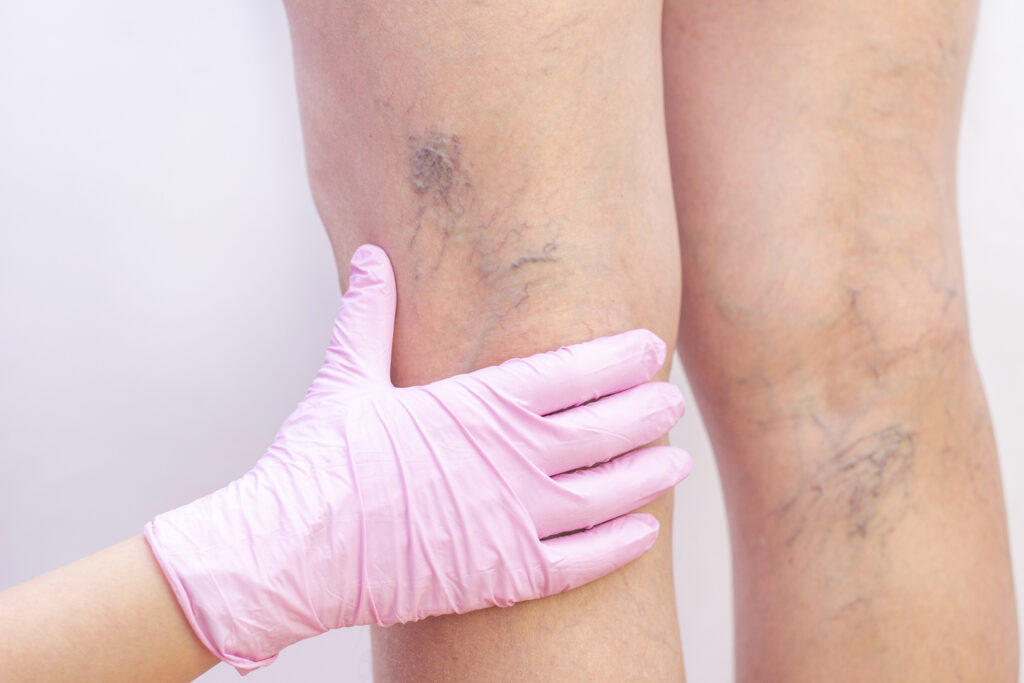
Spider veins, also known as telangiectasias, are tiny dilated blood vessels that appear close to the surface of the skin. They usually show up on the legs, but can also develop on the face.
These veins have a zig-zag, web-like shape and reddish-blue color. Spider veins range in size from millimeters to a few centimeters and look like tree branches or spider webs just under the skin. They may be red, purple, or blue in color.
So what causes spider veins to form?
The underlying cause is chronic venous insufficiency – a condition where blood pools in the veins of the legs due to damaged or faulty valves. These venous valves are supposed to keep blood flowing toward the heart. When they become weakened, blood flows backward and collects in the veins.
Risk factors for developing spider veins include:
- Genetics
- Pregnancy
- Weight gain
- Standing for long periods
- High blood pressure
- History of blood clots
- Menopause
- Use of birth control pills
- Injury to the leg
As venous pressure builds up over time, the veins begin to dilate and twist. The walls of the veins become stretched and thin, allowing blood to show through the skin. This results in the tangled, web-like clusters of veins we call spider veins.
What Are the Symptoms of Spider Veins?
For many people, spider veins do not cause any symptoms. The veins appear as painless, harmless cosmetic flaws on the legs. However, for some, spider veins can be associated with discomfort and pain.
Common symptoms of spider veins include:
- Aching, throbbing, muscle cramping, or burning in the legs
- Pain or heaviness in the legs
- Swelling in the ankles and feet
- Night cramps in the calves
- Itching skin over the veins
- Restless legs at night
Women may find their spider veins and related discomfort get worse during pregnancy or while using birth control pills. Symptoms also tend to worsen toward the end of the day after prolonged standing or sitting.
While spider veins themselves are not dangerous, they can seriously impact quality of life. Itching, burning, and cramping can make it difficult to exercise, stand for long periods, or sleep peacefully.
Can Spider Veins Cause Leg Cramps?
So can spider veins actually contribute to or cause painful leg cramps? The short answer seems to be yes, they can.
Leg cramps at night are a common complaint among those with spider veins. While there is limited research specifically on spider veins and leg cramps, studies have found a link between varicose veins and nighttime leg cramps. Spider veins are often a milder manifestation of the same underlying venous insufficiency.
Though we need more direct research, it appears spider veins arising from venous insufficiency can contribute to painful cramping of the calf and leg muscles.
How Do Spider Veins Lead to Leg Cramps?
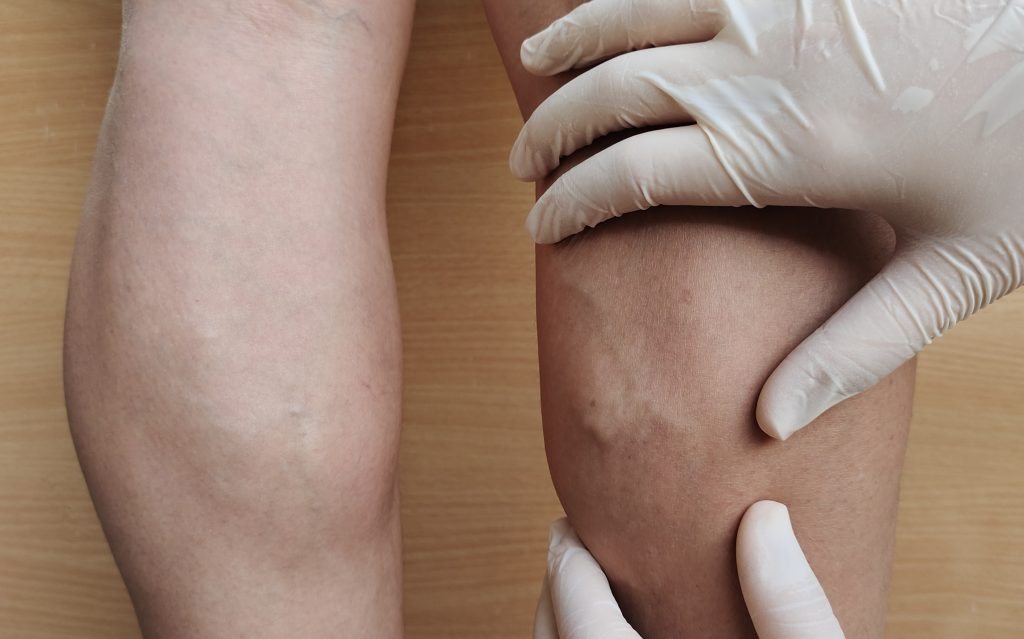
There are a few explanations for how spider veins might triggering leg cramps and restless legs at night:
Toxin buildup – Spider veins cause blood to pool in the veins of the legs. This stagnant blood becomes depleted of oxygen and loaded with metabolic wastes. Experts believe these waste products may leak into the tissues and irritate the nerves and muscles. This can lead to painful cramping and spasms.
Circulation changes – Poor circulation itself can activate nerve fibers and cause leg muscle cramps. When blood isn’t effectively returning to the heart, the nerves may misfire, causing the sudden contractions we feel as cramps.
Vein dilation – As spider veins grow and dilate, they put pressure on surrounding nerves. This stimulation of the nerve fibers can translate into leg and foot cramps.
Muscle fatigue – Chronic venous insufficiency often leads to leg heaviness and achiness. Having to muscle your heavy, tired legs around all day can leave the calves fatigued, sore, and prone to cramps at night.
Electrolyte imbalance – Blood pooling in the veins can throw off electrolyte levels in the muscles. This depletion of salts like potassium and magnesium is yet another potential trigger for muscle spasms and charley horses.
Spider veins contribute to leg cramping through toxin accumulation, nerve and vein pressure, poor circulation, and fatigue. The cramping tends to strike at night when the legs have a chance to rest and the veins can further dilate and engorge.
What Are the Complications of Untreated Spider Veins?
Spider veins themselves are not dangerous and very rarely have serious complications. However, leaving the underlying chronic venous insufficiency untreated can lead to problematic symptoms and progression to varicose veins.
Potential complications of untreated spider veins and venous reflux include:
- Worsening pain, cramping, swelling, burning, and throbbing
- Development of varicose veins
- Leg heaviness, fatigue, and restlessness
- Discolored skin and tissue damage
- Formation of venous ulcers (open sores)
- Increased risk of superficial thrombophlebitis (blood clots)
- Decreased mobility and ability to exercise
The good news is, almost all cases of spider veins respond very well to treatment. Treating the faulty valves and venous reflux can relieve symptoms like leg cramps and prevent future complications.
What Are the Best Treatment Options for Spider Veins?
From medications to surgery, you have options when it comes to spider vein treatment. Your doctor will help select the best treatment approach based on the location and extent of your spider veins.
Medications
Over-the-counter pain relievers like NSAIDs may provide temporary relief from achiness or discomfort associated with spider veins. Your doctor may also prescribe medications to improve blood flow and circulation in the veins.
Compression Stockings
Wearing special compression stockings puts gentle pressure on the legs. This helps push blood up through the veins and improves circulation. Most patients are advised to wear compression stockings during the day following spider vein procedures.
Sclerotherapy
This is the standard minimally invasive treatment for eliminating spider veins. A solution, usually a saline solution or chemical irritant, is injected directly into the veins. This causes them to collapse and fade away within a few weeks. Several sessions may be required.
Laser Therapy
A beam of laser light generates heat that damages the vein walls. The spider veins eventually collapse and disappear. This requires no injections or needles. Mild discomfort and bruising may occur.
Ambulatory Phlebectomy
Tiny incisions are made over the veins and the problematic veins are directly removed through the micro-incisions. This is one of the quickest ways to eliminate spider veins on the legs.
Endothermal Ablation
Heat energy is used to seal off and destroy spider veins. Radiofrequency and laser fiber are two forms of endothermal ablation used. This procedure requires no surgical removal of veins.
How Can You Prevent Spider Veins?
You may not be able to prevent spider veins completely, especially if you have a genetic predisposition. However, adopting some simple lifestyle measures can help minimize your risk:
- Maintain a healthy weight to avoid pressure on the leg veins.
- Exercise regularly to improve circulation in the legs.
- Avoid prolonged standing or sitting in one position.
- Take occasional breaks to walk around and stretch your legs.
- Wear compression stockings to support the veins.
- Keep your legs elevated on a stool or pillow when sitting.
- Avoid exposing your legs to excess heat from hot tubs, saunas, etc.
- Eat a diet high in flavonoids, vitamin C, and other antioxidants.
- Don’t smoke, as this damages blood vessels.
- Treat underlying conditions like high blood pressure.
Catching and treating spider veins early on can also stop them from worsening and turning into varicose veins. See your doctor promptly if you notice any new spider veins developing.
Are There Home Remedies for Spider Veins?
At-home remedies won’t make spider veins go away for good. But they can sometimes provide relief from achiness, swelling, and discomfort related to spider veins:
Exercise – Simple calf raises, leg lifts, and ankle rotations help boost blood flow. This alleviates heaviness and improves cramping caused by blood pooling.
Massage – Gently massage your legs in an upward motion toward the heart. This helps move blood through the veins.
Heat – Warm (not hot) compresses can encourage circulation and soothe achy legs. Apply for 15 minutes at a time.
Cooling – Cold compresses constrict veins and offer relief from throbbing or inflammation.
Elevate – Prop up your legs so they are above the level of your heart. This allows gravity to help drain blood from the veins.
Compress – Over-the-counter compression socks or leggings can provide light pressure to support vein walls.
Watch diet – Avoid foods that widen veins, like salt, caffeine, and alcohol. Focus on antioxidants.
OTC painkillers – Anti-inflammatories like ibuprofen or naproxen can take the edge off leg achiness.
Always check with your doctor before trying natural remedies, especially with any concurrent health conditions or medications. Compression stockings should be properly fitted by your doctor.
When Should You See a Doctor for Spider Veins and Leg Cramps?
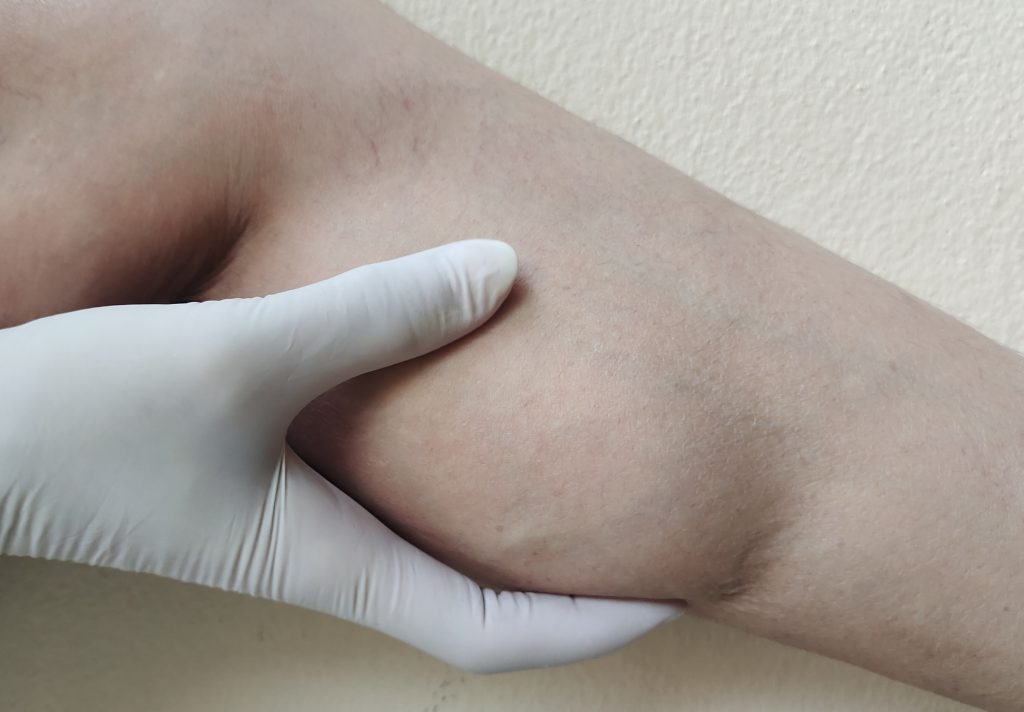
Make an appointment with your doctor or vascular specialist if you experience:
- New spider veins developing rapidly
- Spider veins that are very large or spreading
- Painful, persistent burning or throbbing in the legs
- Frequent or severe leg cramps at night
- Swelling that doesn’t improve with rest or elevation
- Discolored or hardened skin around veins
- Bleeding from spider veins
- An open sore on the leg that won’t heal
Prompt medical treatment can ease your symptoms and prevent small spider veins from worsening. Depending on the severity, your doctor may recommend prescription medications, compression stockings, or minimally invasive procedures like sclerotherapy or endothermal ablation.
Treating the faulty valves and venous reflux causing spider veins can help resolve painful leg cramps. You may also need medication or supplements to address any resulting electrolyte imbalances or muscle issues.
Your doctor will begin with a medical history and physical exam of your veins. They may use ultrasound imaging to assess blood flow and valve function. From there, an appropriate treatment plan can be developed targeting the underlying cause of your spider veins.
With today’s technologies, most patients see a marked improvement after just 1-2 spider vein treatment sessions. You can quickly get back to pain-free legs that are ready for all your favorite activities. Don’t let annoying spider veins or persistent leg cramps slow you down. Seek proper diagnosis and treatment to get back to comfortable, healthy legs again.
